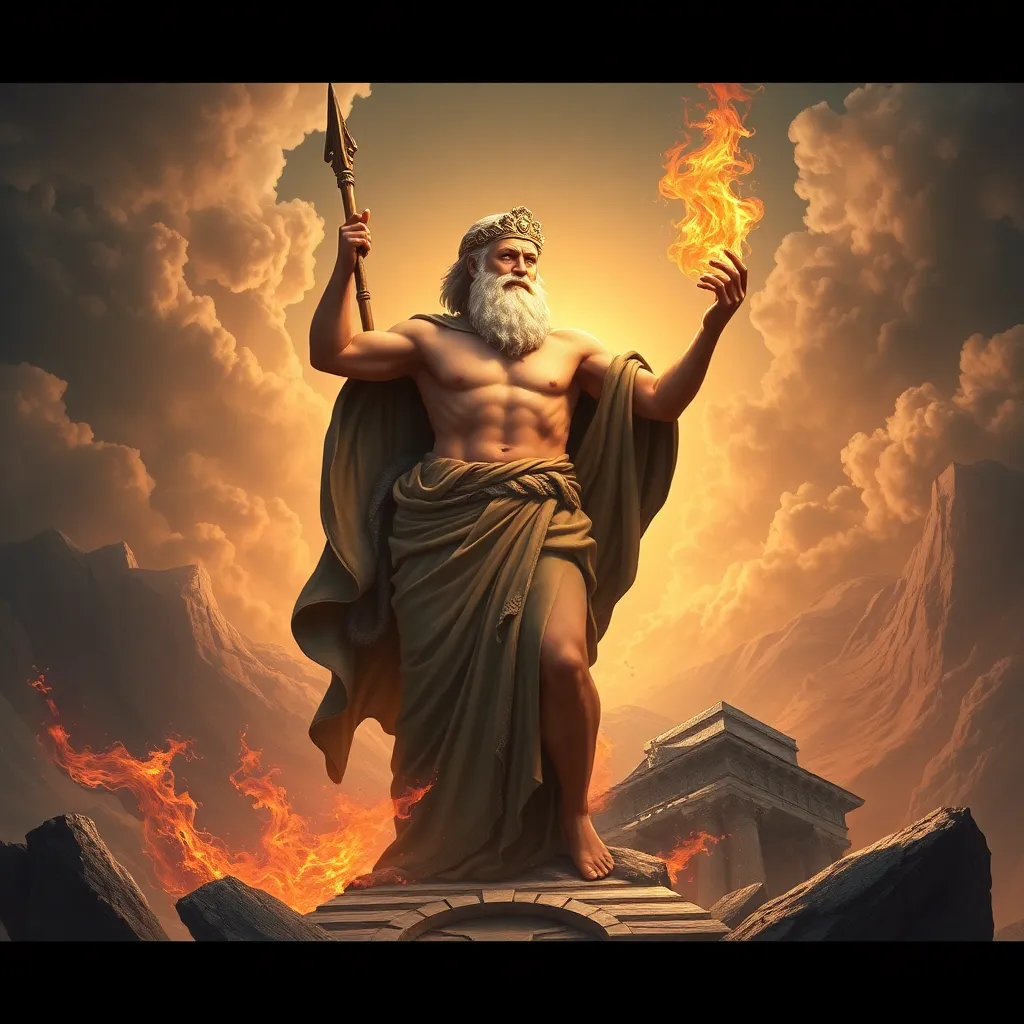The Myths of Hephaestus and the Divine Right to Create
Introduction to Hephaestus: The God of Fire and Craftsmanship
In the rich tapestry of Greek mythology, Hephaestus stands out as the god of fire, craftsmanship, and blacksmiths. Revered as a master artisan, Hephaestus embodies the spirit of creativity and invention. His significance extends beyond the forge; he represents the divine right to create, a concept that echoes through the ages, influencing both ancient and modern perceptions of artistry and craftsmanship.
Mythological Origins of Hephaestus
Hephaestus’ origins are as fascinating as his creations. According to myth, he was born to Hera and Zeus, though accounts of his birth vary. In some tales, Hera produced him alone, angry at Zeus for birthing Athena without her. Hephaestus’ early life was marked by adversity; he was born with physical impairments, described as lame, which carried significant symbolism in mythology. His deformity often represented the struggles of artists and creators who face societal rejection.
The duality of his parentage—Hera, the queen of the gods, and Zeus, the king—plays a crucial role in shaping his narrative. While Zeus embodies power and authority, Hera represents a more maternal aspect, often seen as protective yet vindictive. This complex relationship set the stage for Hephaestus’ journey in a world that often undervalued him.
Hephaestus and the Art of Creation
As a craftsman, Hephaestus was unrivaled among the gods. His skills were not limited to blacksmithing; he was also a creator of intricate automatons and divine weapons. Notable creations include:
- The shield of Achilles, a masterpiece depicting the world and its complexities.
- The golden automatons that served as his helpers in the forge.
- Weapons for gods and heroes, such as Perseus’ sword and the armor of Hercules.
Hephaestus’ work is a testament to the relationship between creativity and divinity. His creations were not merely functional; they embodied beauty and artistry, showcasing the divine spark inherent in all acts of creation.
The Divine Right to Create: A Philosophical Perspective
The divine right to create can be understood as the authority granted to deities to shape and influence the world through their creations. This concept raises several implications:
- Creation as an extension of divine will: The act of creation is often seen as a reflection of the creator’s intentions and desires.
- Comparison between mortal and divine creativity: While humans create out of necessity and passion, gods like Hephaestus create from a place of abundance and inspiration.
- Responsibilities of creation: In mythological contexts, the act of creation comes with the weight of responsibility, often influencing the fate of mortals and immortals alike.
Hephaestus’ narrative illustrates that creation, whether divine or mortal, is intertwined with the ethical considerations of what one brings into existence.
Hephaestus’ Relationships: Love, Betrayal, and Forgiveness
One of the most compelling aspects of Hephaestus’ story is his tumultuous relationship with Aphrodite, the goddess of love and beauty. Their marriage was arranged, and while it brought together two powerful deities, it was fraught with challenges.
Aphrodite’s infidelity with Ares, the god of war, is a central theme in Hephaestus’ story. This betrayal highlights:
- The themes of jealousy and revenge: Hephaestus’ response to the betrayal was both ingenious and vengeful, showcasing his cleverness as a craftsman.
- The complexity of love: Unlike the idealized romantic relationships in mythology, Hephaestus’ marriage reflects the real struggles and pains of love.
Despite the betrayal, Hephaestus ultimately exemplifies forgiveness, choosing to rise above personal heartbreak and channeling his emotions into his work, thus influencing his mythological legacy.
Cultural Interpretations of Hephaestus Across Time
Hephaestus’ influence on ancient Greek culture is profound. He was depicted in various forms of art, including pottery, sculpture, and literature. His character embodies the virtues of hard work and resilience, inspiring generations of artisans. In modern times, Hephaestus has been reinterpreted in literature and media, often portrayed as a symbol of:
- Resilience: His physical impairments and subsequent triumphs reflect the human spirit’s capacity to overcome adversity.
- Creativity: He represents the idea that true artistry comes from embracing one’s uniqueness and transforming it into something beautiful.
The evolution of Hephaestus’ image—from a divine craftsman to a universal symbol of perseverance—demonstrates the timeless nature of his myths.
Debunking the Myths: Hephaestus as a Symbol of Human Struggle
Common myths surrounding Hephaestus often overlook the deeper messages within his story. He is not merely a god of fire and metal; he represents the struggles inherent in the creative process. His narrative reflects the human condition, capturing themes of:
- Acceptance: Hephaestus’ journey is one of self-acceptance, teaching that one’s worth is not dictated by physical appearance or societal standards.
- Perseverance: His unwavering dedication to his craft serves as a reminder of the importance of passion and commitment in creation.
Through Hephaestus, we learn that the path to creation is often fraught with challenges, yet it is this very struggle that gives rise to profound artistry.
Conclusion: The Enduring Legacy of Hephaestus and the Nature of Creation
Hephaestus’ influence on creativity and craftsmanship is undeniable. His story embodies the divine right to create, a concept that continues to resonate in contemporary society. As we reflect on his legacy, we recognize the importance of embracing our creative impulses, regardless of the obstacles we face.
Ultimately, Hephaestus inspires modern creators and thinkers to view their struggles as integral to their artistic journey. Just as Hephaestus transformed his pain into beauty, we are encouraged to channel our experiences into the creative process, continuing the timeless tradition of creation that he so vividly represents.




